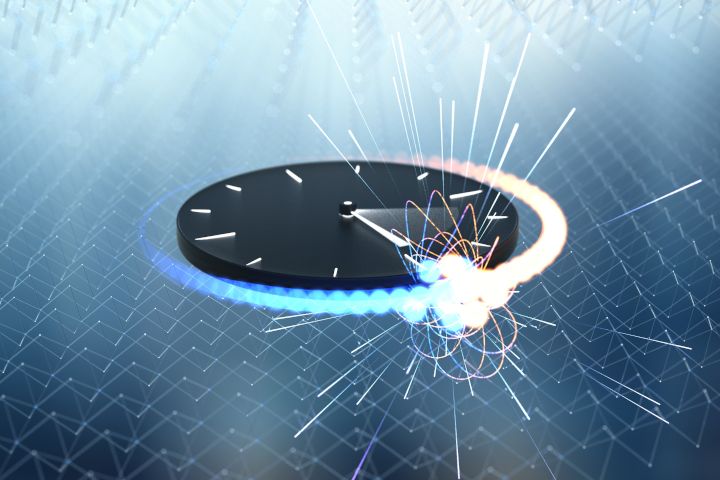
Nature
Delocalized Bloch electrons and the low-energy correlations between them determine key optical1, electronic2 and entanglement3 functionalities of solids, all the way through to phase transitions4,5. To directly capture how many-body correlations affect the actual motion of Bloch electrons, subfemtosecond (1 fs = 10−15 s) temporal precision 6,7,8,9,10,11,12,13,14,15 is desirable. Yet, probing with attosecond (1 as = 10−18 s) high-energy photons has not been energy-selective enough to resolve the relevant millielectronvolt-scale interactions of electrons1,2,3,4,5,16,17 near the Fermi energy. Here, we use multi-terahertz light fields to force electron–hole pairs in crystalline semiconductors onto closed trajectories, and clock the delay between separation and recollision with 300 as precision, corresponding to 0.7% of the driving field’s oscillation period. We detect that strong Coulomb correlations emergent in atomically thin WSe2 shift the optimal timing of recollisions by up to 1.2 ± 0.3 fs compared to the bulk material. A quantitative analysis with quantum-dynamic many-body computations in a Wigner-function representation yields a direct and intuitive view on how the Coulomb interaction, non-classical aspects, the strength of the driving field and the valley polarization influence the dynamics. The resulting attosecond chronoscopy of delocalized electrons could revolutionize the understanding of unexpected phase transitions and emergent quantum-dynamic phenomena for future electronic, optoelectronic and quantum-information technologies.
SFB 1277
Doris Meier
Universität Regensburg
Phone: +49 (0) 941-943 2264
Email: SFB1277.Office@ur.de